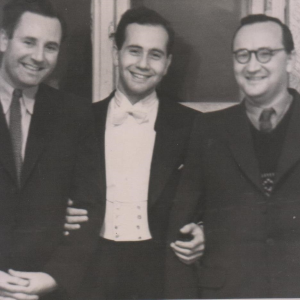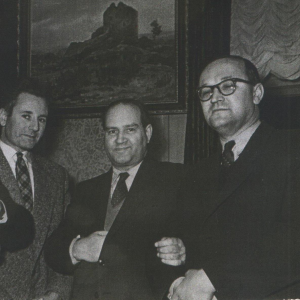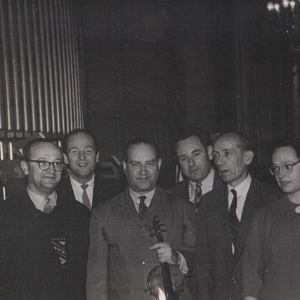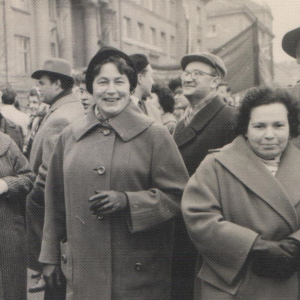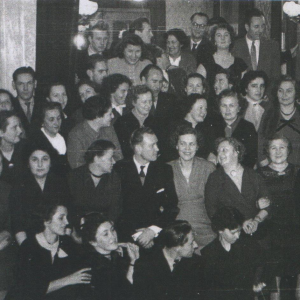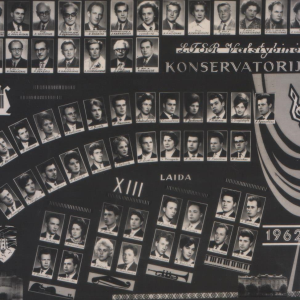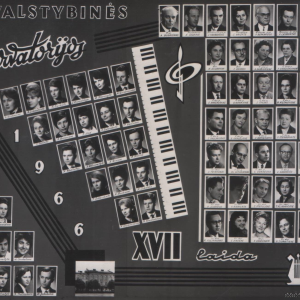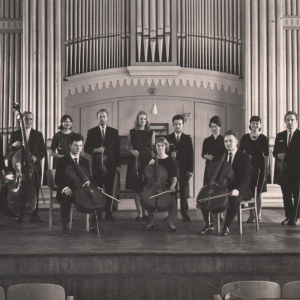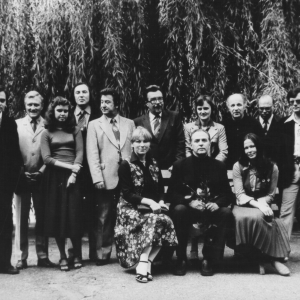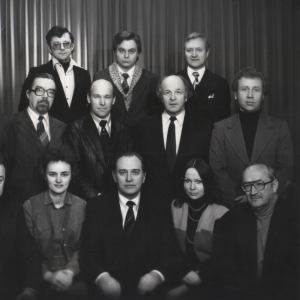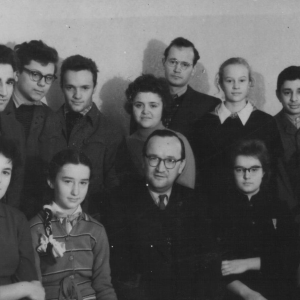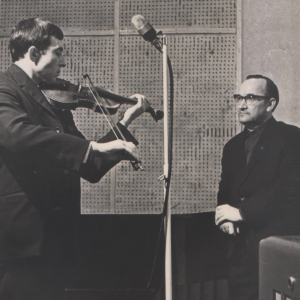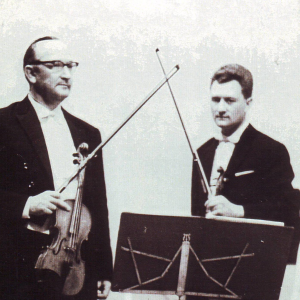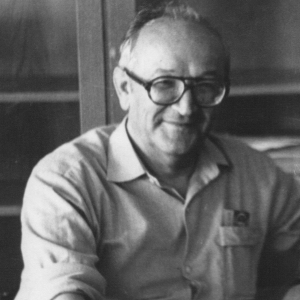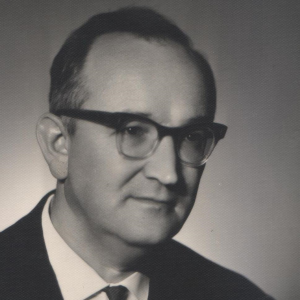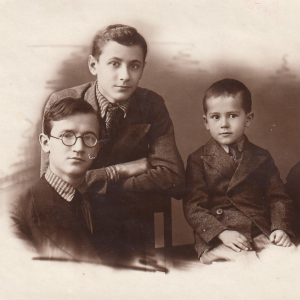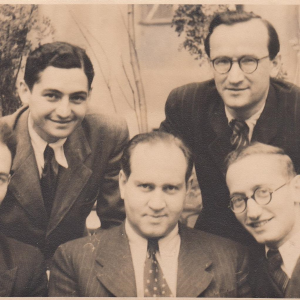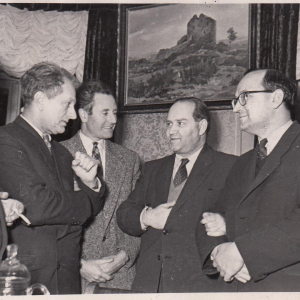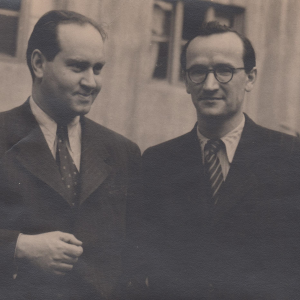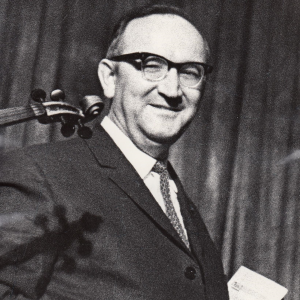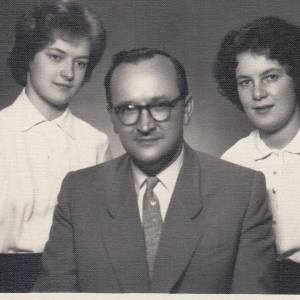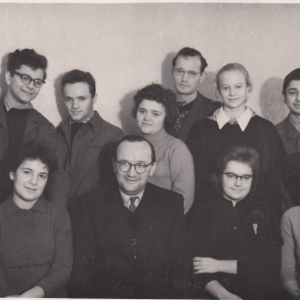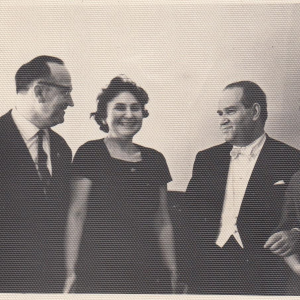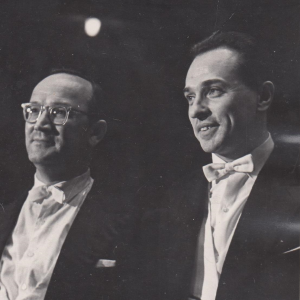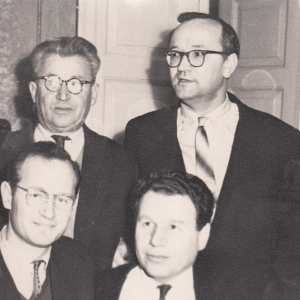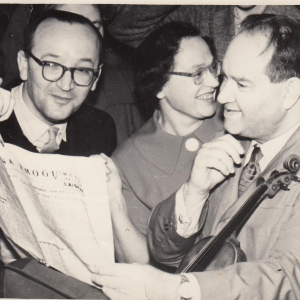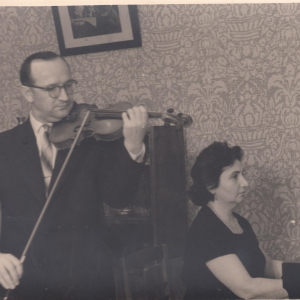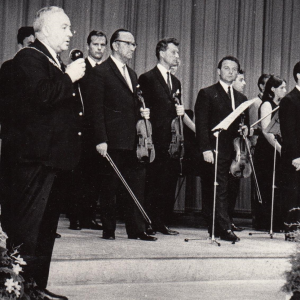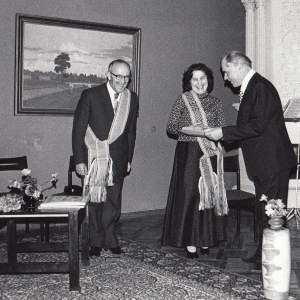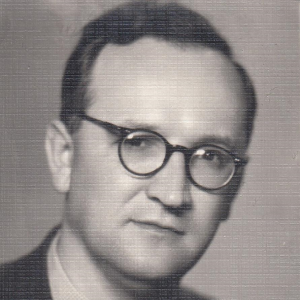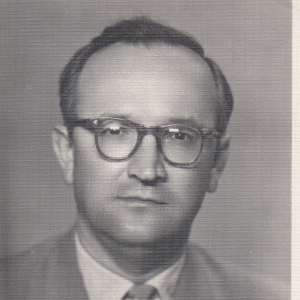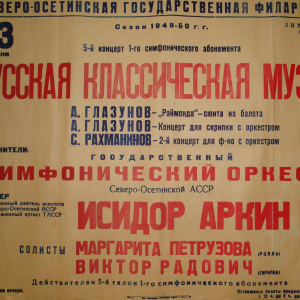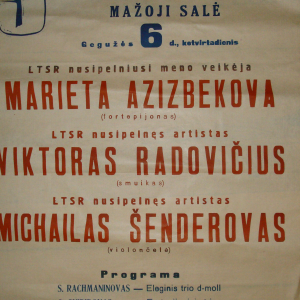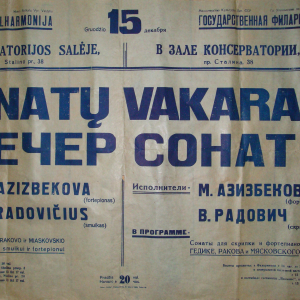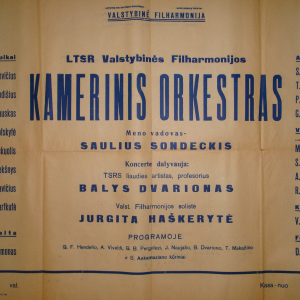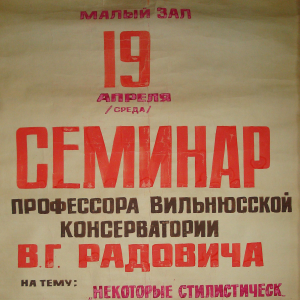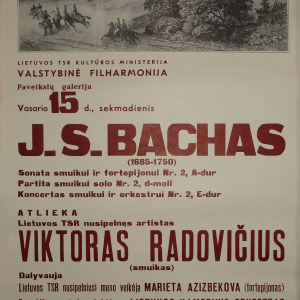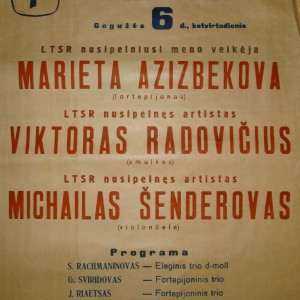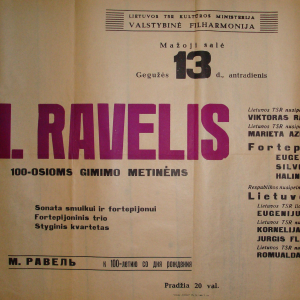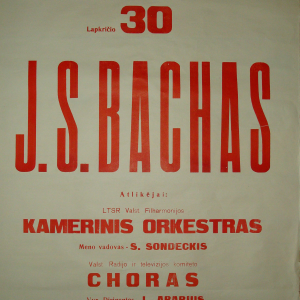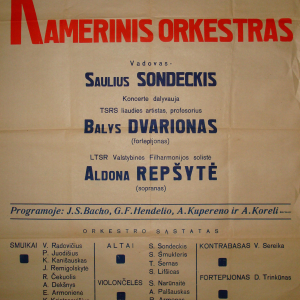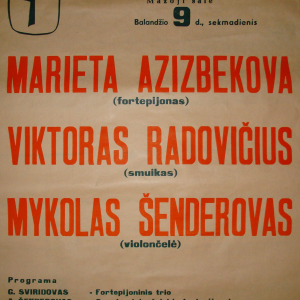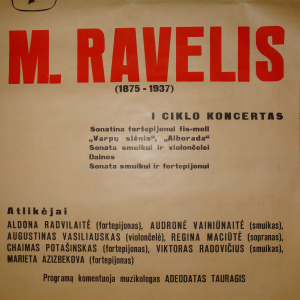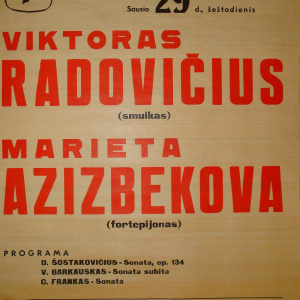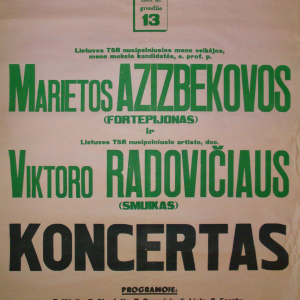
Viktoras Radovičius (violin)

Viktoras Radovičius (born on 28 November 1919 in Vladimirovka (Abkhazia) – died on 30 July 1982 in Vilnius) was a Lithuanian violinist, a performer, a pedagogue, one of the most eminent personalities in Lithuanian art of music of the second half of the 20th century who with his concerts, pedagogical and public activities contributed significantly to developing the most advanced violin teaching methods and building up the traditions of the Lithuanian violin school.
Radovičius Viktoras was born on 28 November 1919 in Vladimirovka, not far from the city of Sukhumi (Abkhazia). In 1924, he moved to Rostov-on-Don together with his family. In 1935, he started to go to music school in Rostov-on-Don (together with the pianist Maria Azizbekova) and learned in the class of Prof. Valentin Portugalov’s pupil Leopold Auer. In 1938, he moved to Moscow and entered the Moscow Conservatory named after Pyotr Tchaikovky. In 1941, when the war broke out, together with the staff of the Conservatory, he withdrew to Saraton, later worked as a violinist in Rostov-on-Don, Kamanec-Podolsk and Bratislava. In 1945, he resumed his studies at the Moscow Conservatory and graduated from it in 1948, from Prof. David Oistrach violin class. In August of 1950, together with his wife pianist Matias Azizbekova, came to work in Vilnius.
Creative path
Soon Viktoras Radovičius became known as an active member of the cultural life of Lithuania, a talented pedagogue, a solo violinist and a participant in different ensembles.
From 1950 to 1952, he played in the symphony orchestra of the National Radio Committee, in 1954 he played in the Lithuanian Quartet, was one of the founders of the Lithuanian Chamber Orchestra, between 1960 and 1974, he was a leader of that orchestra. He mainly gave concerts together with his wife pianist Maria Azizbekova, between1954 and 1978 (about 25 years) the lovers of music could enjoy the trio of Viktoras Radovičius, pianist Maria Azizbekova and violoncellist Michailas Šenderovas. The performers had built up a vast and miscellaneous repertoire of chamber duets and trios. The largest part of their programme was devoted to music of the 20th century. They performed compositions by Maurice Ravel, Nikolai Myaskovsky, Sergei Prokofiev, Dmitri Shostakovich. Viktoras Radovičius extended the concert repertoire of Lithuanian performers with rare musical compositions that were not widely known in Lithuania; for example, in 1967, Igor Stravinsky’s Kareivio istorija [The Solder’s tale] was performed in Lithuania for the first time. The performer’s repertoire included compositions by Vytautas Barkauskas, Balys Dvarionas, Antanas Račiūnas, Stasys Vainiūnas. He was the first performer of many Lithuanian musical compositions. Music by Johann Sebastian Bach constituted an inseparable part of Viktoras Radovičius’ repertoire; it corresponded closely with the performer’s spiritual disposition. Viktoras Radovičius gave concerts in Lithuania, the Republics of the Soviet Union, Yugoslavia, Canada and Germany.
Maria Azizbekova wrote about the formation of Viktoras Radovičius’ creative maturity the following: ‘It was in his youth already that he was keen on lyricism. Virtuosity in itself never attracted him. Viktoras Radovičius categorically rejected the performer’s aggressive intrusion in musical material. A noble, respectful attitude to a musical composition and its author prevented him from bringing himself to the fore. However, the objectivistic, too intellectual style of performance was unacceptable to him either. The secret of Radovičius’ art consists of the infallible adjustment of moderation of expression of emotions, the performer’s temperament, sincere, natural feelings and artistic nobleness characteristic of him’. (…) ‘I remember the peculiarities of Viktoras Radovičius’ playing; the first thing to be produced was the sound of his violin. Having thoroughly studied melodious, intonationally expressive ways of producing a sound, he identified the sound of the violin with a human voice that was rich in the shades of timbre and dynamic nuances. His pupils and a large number of the observers of different violin expertise, as well as myself, were always surprised at the fact that after the Professor had taken some, even a quite mediocre, instrument into his hands, its sound became immediately melodious’.
Audio recordings kept in the stocks of Lithuanian Radio have preserved the unique sound of Viktoras Radovičius’ violin.
Pedagogical activity
Having attended classes of excellent pedagogues, accumulated wide stage experience, acquired theoretical and practical knowledge, Viktoras Radovičius continued and cherished the best traditions of David Oistrakh school of violin, sought to inspire in his pupils a love for music and devotion to it, a striving for professional excellence. Beginning with 1950, he worked at Vilnius Ten-Year Music School (currently the Vilnius Mikalojus Konstantinas Čiurlionis Art Gymnasium), from 1952 he worked at the Lithuanian State Conservatory (currently the Lithuanian Academy of Music and Theatre). In 1966, the title of Associate Professor was conferred on him; in 1979, he was awarded a professorship. The efficiency of his teaching methods was testified to by the impressive achievements of his pupils in national and international competitions – many of them became laureates and diploma winners. His former pupil Professor Undinė Jagėlaitė wrote the following: ‘Viktoras Radovičius, as a pedagogue, devoted great attention to developing professionalism of violinists, perfecting the school of playing: he was convinced that first of all it was necessary to comprehend the style of performing musical compositions of different composers and epochs – to go through the “academy” of playing and only then would the basis for the development of individuality be formed’.
Viktoras Radovičius set high standards to his pupils and saw to it that they should develop good professional skills, was noted for his attention to each pupil individually and high tolerance towards them. He never raised his voice and worked with his students quietly and patiently, was always well-wishing and ready to lend a helping hand. His colleagues and his students often observed his lessons. Viktoras Radovičius educated a large circle of distinguished musicians and pedagogues working in Lithuania and beyond its borders and continuing traditions of violin art and pedagogy that he established. Among his pupils are such distinguished musicians as Audronė Vainiūnaitė, Jurgis Dvarionas, Petras Kunca, Rimtautas Čekuolis, Undinė Jagėlaitė, Rusnė Mataitytė, Jonas Tankevičius, Ingrida Armonaitė, M. Šmitas (Israel), H. Bankas (Canada).
Viktoras Radovičius was loved and respected by his colleagues, appreciated as a qualified expert on the largest European and Russian violin schools, an erudite with excellent memory and a great authority on the issues of the art of music. He combined practical work with scientific methodological activities. He taught a new course in the history of music and pedagogy at the Lithuanian Conservatory, delivered lectures at music schools and institutions of higher education in Riga and Moscow, in the ‘Žinijos’ [Knowledge] Society. Due to professional and personal qualities Viktoras Radovičius had unquestioned authority both in Lithuania and abroad, was on a jury of many competitions, a member of final examination commissions.
For his outstanding merits to Lithuanian musical culture, in 1964, Viktoras Radovičius was awarded an honorary tile of the Merited Artist of the Republic of Lithuania.
He died on 30 July 1982 in Vilnius. Buried in Antakalnis Cemetery.
Since 2007, the International Competition of Young Players on Stringed Instruments dedicated to the memory of Viktoras Radovičius has been held at Vilnius Naujoji Vilnia Music School every three years.
Prepared by Aldona Juodelienė
Sources:
1. Azizbekova Mariam. Radovičius Viktoras. Muzikos enciklopedija, Vilnius, T III, 2007, p. 174.
2. Azizbekova Mariam. “Smuikininko, pedagogo menas”. 7 meno dienos Nr. 47, 1994 m. lapkričio 25 d.
3. Badjanova Vera. „Prisimenant profesorių Viktorą Radovičių“. Muzikos barai, 2016 gruodis, Nr. 11-12 (466-467), p. 40.
4. Jagėlaitė Undinė. “Jau – istorija”. Muzikos barai,1990 kovas, Nr. 6 (67) , p. 6.
5. Pšibilskienė Audronė . “Patarimų – kiaurą dieną”. Literatūra ir menas, 2009 gruodžio 4 d.
6. “Toks gyvenimas: “Jie atliko didelį darbą Lietuvai…”. Bernardinai, 2005 gegužės 31 d. Prieiga per internetą: http://www.bernardinai.lt/straipsnis/2005-05-31-toks-gyvenimas-jie-atliko-dideli-darba-lietuvai/5992 [žiūrėta 2019 07 22]
Violin solo
J. S. Bach
Sonatas and partitas violin solo
Partita No. 2, in D minor
Violin and piano
J. S. Bach
Sonata No. 2, in A major
Sonata No.1, in B minor
J. Brahms
Sonata No. 3 in D minor
A. Bababjanian
Sonata in B flat minor
O. Balakauskas
Sonata op. 22
V. Barkauskas
Sonata
„Dialogues“
H. Eder
Sonatina op. 34, No. 1
S. Feinberg
Sonata op.46
C. Franck
Sonata
G. F. Handel
Sonata
L. Lubovsky
Sonata
N. Paganini
Cantabile
S. Prokofiev
Sonata op.94, No. 2
A. Račiūnas
Sonata
M. Ravel
Sonata
N. Rosing-Schow
„E rigidis“
R. Strauss
Sonata in E flat major, op.18
R. Shchedrin
In the Style of Albeniz
D. Shostakovich
Sonata op.134
S. Vainiūnas
Sonata
T. Vitoli
Chaconne
Chamber Works
A. Babajanian
Trio for piano, violin and cello
R. Biveinis
„Spiritus Astri“, for violin and two pianos
A. Khachaturian
Trio for piano, violin and clarinet
A. Corelli
Concerto grosso op. 6, No. 1
Sonata for violin and organ op. 5, No. 9
S. Rachmaninoff
Trio in D minor
J. Rääts
Piano trio
I. Stravinsky
„The Soldier's Tale“
G. Sviridov
Trio for piano, violin and cello
